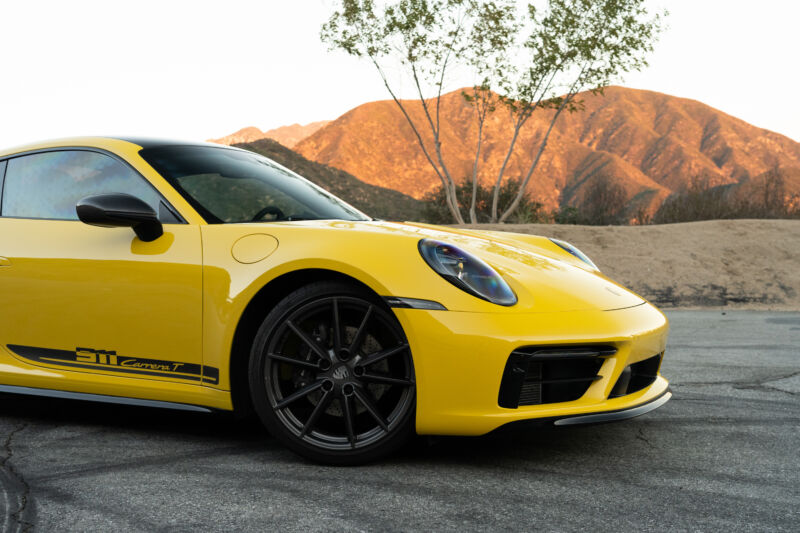
Tim Stevens
Getting bigger and heavier as you get older is something many of us can relate to. Even the sportiest cars are not immune to this unfortunate expansion. The Porsche 911 weighed just 2,400 lbs (1,089 kg) when new in the early 1960s and was only 165 inches (4,191 mm) long. Since then it has grown by more than a foot (300 mm) and has packed more than 800 pounds (363 kg).
Mind you, the 911 is still a great car, sublime really, but that bigger size has turned the Carrera from a proper sports car into something on the sporty side of a comfortable touring machine. But now, with the return of the Carrera T, the 911 is going back to its roots. After spending a wonderful evening carving canyons in California, I’m happy to say the result is remarkable.
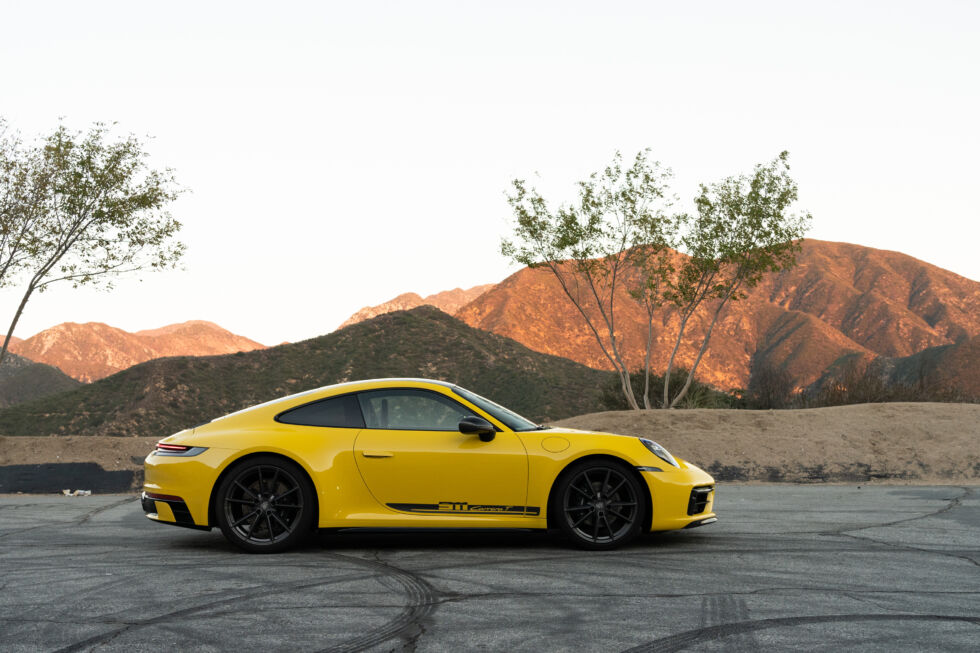
Tim Stevens
The T in Carrera T actually stands for “touring,” but that’s a bit of a misnomer. Here it is an indication of a lighter, sharper, more captivating taste of Carrera. The first Carrera T premiered way back in 1968, a simpler 911 that most famously captured the Monte Carlo Rally at the hands of Vic Elford.
After 1973, that model was retired and revived in 2017 for the then current 991.2. Since then, Porsche has thrown a T on the 718 Cayman, 718 Boxster, and even the Macan, always denoting something pared back and performance-oriented.
What has Porsche done to create the new 911 Carrera T? Well, it starts with a base Carrera, with rear-wheel drive, 379 hp (283 kW) and 331 lb-ft of torque coming from a 3.0 L, twin-turbocharged six-cylinder engine. That’s well below the 443 ponies (330kW) offered by the Carrera S and well below the GTS’s 473 (352kW), but trust me when I say it’s more than enough. More about that later.
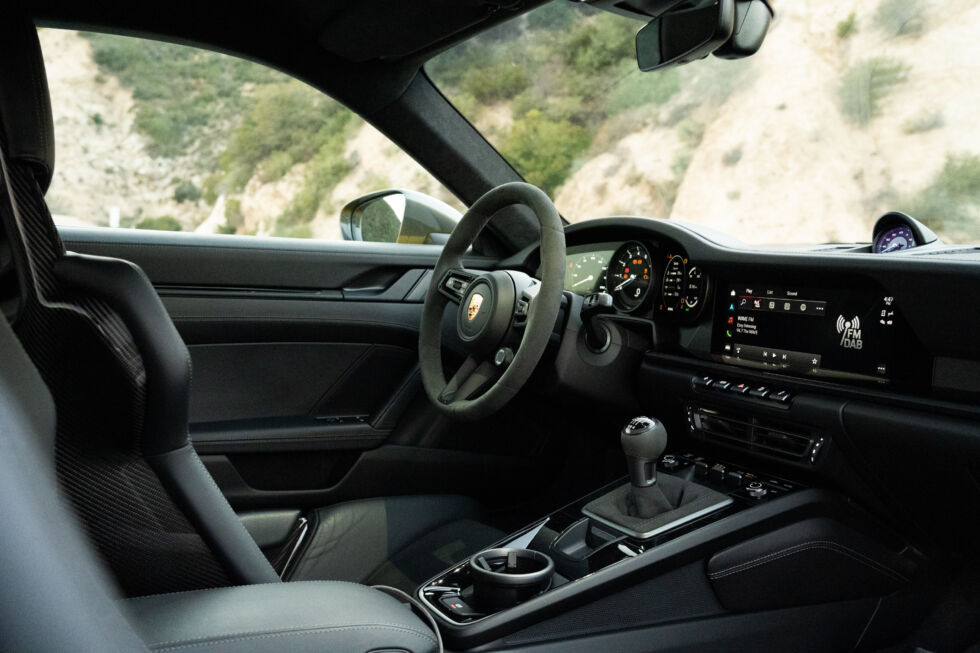
Tim Stevens
Porsche then paired that with a seven-speed manual, complemented by a subtle short-shift kit, although an eight-speed PDK transmission is available as a no-cost option if you’d rather not do your own rowing. Porsche’s limited-slip rear differential with torque vectoring is available if you choose that transmission, and regardless of the number of pedals, you can optionally equip a rear-steering system.
Interestingly, those two options are not available on the base Carrera. That alone makes the T a tempting choice, but the exclusivity doesn’t stop there. Porsche also fitted lightweight glass and a slimmer battery, removed some of the sound deadening material and even removed the rear seat. The net result is a 911 with many desirable performance options, priced at $116,600. That’s $10,500 more than a base Carrera, but 100 pounds (45 kg) lighter.
Mind you, it still weighs 3,254 lbs (1,472 kg). Not exactly Spyder territory, but that lower weight, plus the 10mm lower adaptive suspension and all the other sporty options, result in a Carrera that sounds and feels significantly different from the base machine. And with gray staggered wheels – 20-inch front and 21-inch rear – plus some subtle graphics on the door, it looks good too.
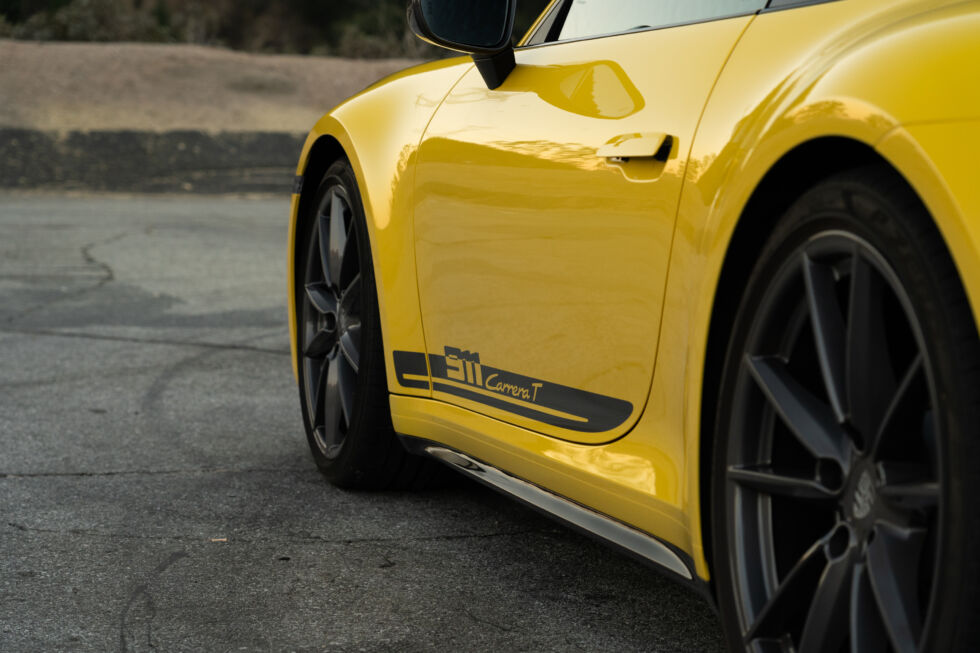
Tim Stevens
I honestly didn’t know what to expect as I drove through LA traffic on my way to the Angeles Crest outside of Pasadena. As I cruised down the freeway, save for a little more road noise and a little extra push from the sublime Full Bucket Seats (a $5,900 option), it all felt pretty much like any other Carrera. In other words: no real compromises.
Off the highway, as the road started to rise and double back on itself, my perspective changed. The Carrera T really came to life. A quick turn of the selector on the steering wheel put me in Sport Plus and, with the sport exhaust open and the throttle tightened, I began to appreciate just how good this car was.
The T cut through to every apex, with the rearward steering not only angles the rear wheels, but also bends the rules of physics that govern our lives. That shortened shifter amplified that feeling. Shifts are short and firm, over before your arm is fully committed to the movement. Grabbing the next gear was so much fun that I jumped between gears way more often than I strictly had to.
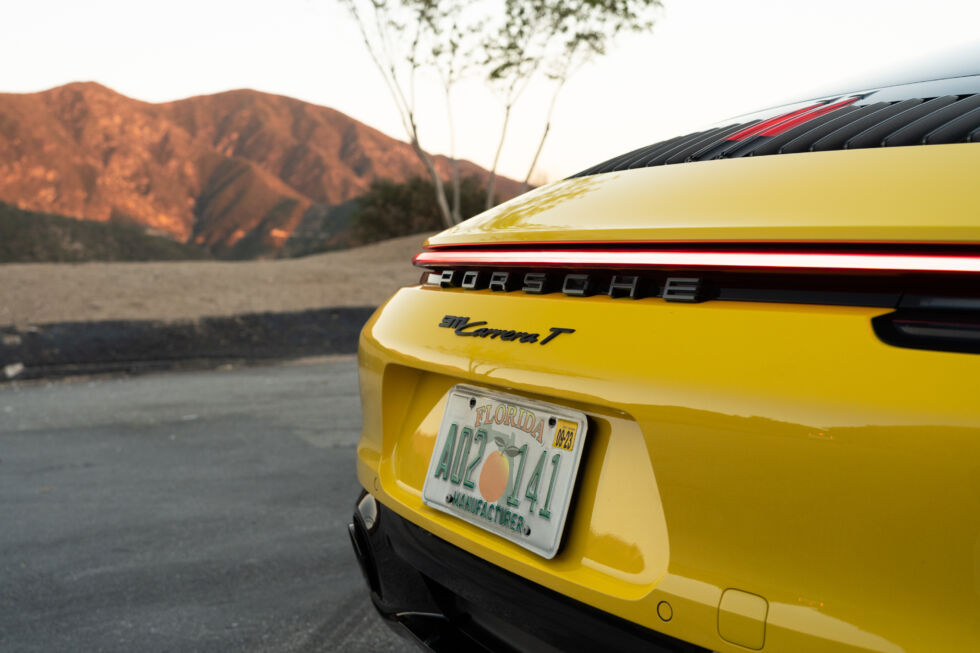
Tim Stevens
And what about the 3.0 L six-cylinder engine that powered it all? It is enough. Of course, several other versions of the 911 offer a lot more power, but this 911 isn’t about outright thrust. The Carrera T is all about the experience. Just as a manual gearbox increases engagement at the expense of outright speed compared to a PDK, more power doesn’t necessarily make a car more fun.
In my book, the Carrera T is the one to buy. At least, if you really want to keep the taste of what the 911 was originally intended to be. Sure, Porsche’s iconic coupe has grown a lot since 1964, but the sheer feel of the Carrera T shows that its roots are still firmly planted.

